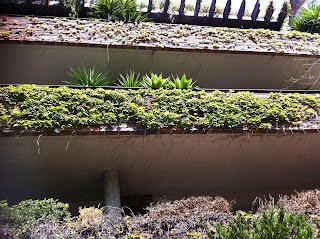














In a large saucepan or pot over medium heat, heat the oil. Add the onions and cook, stirring occasionally, until softened and just beginning to brown, 7 to 10 minutes.
Add the courgette and salt and pepper to taste and cook, stirring occasionally, until it's softened, about 4 to 5 minutes.
Add the garlic and thyme and cook, stirring constantly, for 1 minute. Add the stock or broth, cover and cook for 5 minutes. Add the peas and simmer, uncovered, for 3 to 4 minutes. Add the lemon juice and salt and pepper to taste. Remove from the heat; set aside to cool for at least 10 minutes.
Transfer the soup to a food processor or blender and puree until smooth, processing in batches if necessary. When ready to serve, return the soup to the pan, place over low heat and cook just until warmed through. Do not boil. Taste and adjust the seasoning accordingly.




















My second walk took me further down into the harbour on the Western side. I started at Nielsen’s Park in Vaucluse and walked along the Heritage foreshore path to Rose Bay. Its only about 2km in length but the path is uneven and lots of carved stone steps so not good for grandma or pushchairs.
The swimming area at Nelsons Park was busy for a week day but I’ve since discovered is Yom Kippur which would explain the boys sporting their copolas, along with their beach towels. The path itself though was quiet and apart from the odd fisherman, a drunk under a tree and a fashion shoot, I saw nobody.
Heady with the scent of jasmine, which seems to be pumping through Sydney at the moment, this part of the harbour boasts the only perfect growing conditions for two types of plants that survived the European settlement. Spring was beginning to show with what appeared to be freesias and baby orchids in the undergrowth.
Aside from the pretty private bays, the highlight was Carrara House, now known as Strictland House, which was built in 1854 and now sits with its shutters firmly closed. Such a shame as it appeared to have the best view of Sydney Harbour I’ve seen so far. Named after Carrara, the marble-producing town in Italy of which the fireplaces are constructed, along with two large guard dogs, who unluckily for them, sit with their backs to that view.
Back at the park, I had a cold but delicious swim, as the ferries passed me by, and art students took advantage of the golden hour with their cameras on the beach.



Since getting back from London, M and I have been on a strict health regime, a la Dr Gillian, which resolves eating copious amounts of vegetables. M is doing very well, mainly because he’s eating only what I give him. Naturally, I’ve had to have the odd sneaky glass of wine to cope with stepmother stresses and so I’m counterbalancing my bad behavior with a return to yoga. I’m also getting back into running and trying to up my fitness levels to what they were prior to the absence of Rikki, and the knee incident.
Like London, Sydney has an extraordinary amount of green spaces – big open spans of land next to sea or the bush, or little patches of space between houses. Lots have history and allow you to see how a city has been shaped. For an urban dweller like me, it's the closest I get to nature, for the time being anyway. I absolutely love to be outdoors, and whilst I am unable to work, it's a great opportunity for me to get to know the green spots – along with some of the history of the place that is now home.
I started at Camp Cove, which is adjacent to Watson’s Bay at the tip of the Eastern Suburbs. It was apparently the first landing spot of the European ships, having just made their way through the heads. It sports the oldest lighthouse in NSW, gaily painted in red and white stripes to distinguish it from others further down the coast. The lighthouse was apparently built after the wrecking of several ships on the rocks below – gutting presumably, after such a long voyage at sea to be dashed against rocks only yards from their final destination. Rather bizarrely the first light keeper was the only survivor of one of the first wrecks.
There is a short little circular walk up from the beach – one of Sydney’s prettiest and fringed by houses that compete only with those in places like Malibu and all good for lusting after. The walk passes by the lighthouse and several cannons and long ago redundant, defense relics. There are also some gorgeous flat rocks, perfect for sunbathing and gazing at the ferries passing below. For all out sunbathing, there is Lady Beach (after Lady Jane, although I have no idea why), one of five Sydney beaches that allow nudity.
The adjacent bay is Watsons Bay. Home of Doyles, Australia's oldest fish and chip restaurant with little tables set out on the sand – and one of the best views of the city. You can also stay here at the Watsons Bay Hotel, or get a ferry back to Circular Quay.
